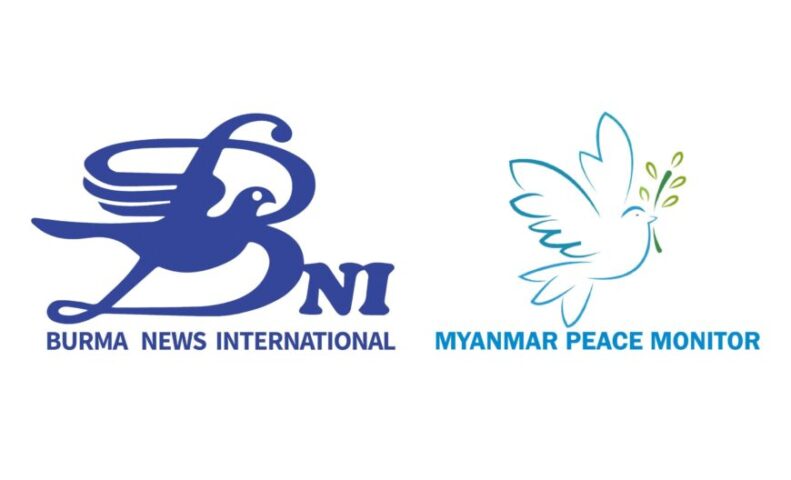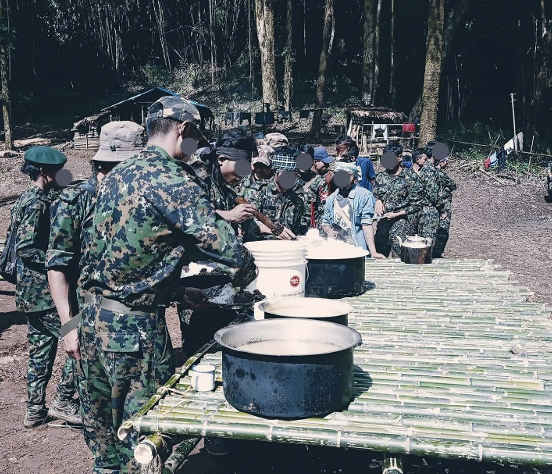An interview with Bo Lin Yone, an official of the NPDF about its stance and policy and current activities.
Since the military coup on 1 February 2021, young people from all over Myanmar have formed People’s Defense Forces (PDFs) in various regions with the aim of not only fighting against military rule but also establishing a federal union.
Of them, the Naga People’s Defense Force (NPDF) was formed in July 2021 and currently stands as No. 1 Battalion of Naga District, Naga Region.
As Naga region borders Hpakant of Kachin State, the NPDF has been carrying out military activities in alliance with the Kachin Independence Organization/ Kachin Independence Army (KIO/KIA) since 2022.
The NPDF is closest to the KIA’s Brigade-9, Battalion-38 in Hpakant region. The NPDF is active in that region. The NPDF joined the Selzin fighting in Selzin together with the KIA.
The Kachin News Group (KNG) interviewed Bo Lin Yone, an official of the NPDF about the stance and policy of the NPDF and the current activities in the remote and inaccessible Naga region of northern Myanmar.
Q: First of all, could you tell us about the stance and policy of the NPDF?
A: The NPDF is operating under the command of the National Unity Government (NUG) as No.1 Naga District Battalion. The NPDF is operating in accordance with the directives and policies of the Ministry of Defense under the NUG. Not because we personally hate Min Aung Hlaing but because we are fighting for the federal system, equality and full individual rights.
Q: Has the NPDF formed alliances with other EAOs and PDFs?
A: The entire Sagaing Region is under the directives and orders of the KIO/KIA. As Naga region is closest to the KIA’s Brigade-9, Battalion-38, we have made an alliance with the KIA/KIO. Since December 2022, we have been active here. We joined the fighting in Selzin together with the KIA/KIO. We are continuing to fight until the fall of military dictatorship in cooperation with our brother in terms of military experiences and other sectors.
Q: Is the NPDF exclusively composed of Naga youths? Are young people from other races also included in the NPDF?
A: The NPDF has Naga, Chin and Shan ethnics. We are collectively working together.
Q: Are CDM police and soldiers included in the NDPF?
A: Yes. Now, we even have the soldiers with three stripes who joined the Civil Disobedience Movement (CDM) in the 2021 Revolution. We are cooperating with the military and police departments. Staff from the General Administration Department are also included in the NPDF.
Q: Currently in which regions is the NPDF mainly active?
A: The main thing is that at the moment we are weak on all sides in terms of ammunition and manpower. We have no weapon power to do activities in Naga region. In the lower Myanmar and Sagaing Region, for instance, forces of Spring Revolution are fighting against the military council, police and Pyu Saw Htee. Our Naga region has more than three military fronts. There are many Naga armed forces in Naga region. Among many forces, some of them, as far as we have heard, are cooperating with the military council. That’s why it is very difficult to stand without weapons in this area. So, since December 2022, we have been cooperating in Kachin State in our battalion office and military operation. Until today, we have been engaging in the revolution against the military council.
Q: The National Socialist Council of Nagaland-Khaplang (NSCN-K) has already been active in Naga region. Autonomy is granted to the NSCN-K. What is the relationship between the NSCN-K and the NPDF now?
A: In our view, there is no reason to have a problem with the NSCN-K since we first came out. Because they have already had separate policies. We are not working for our Naga people alone. We are working for 54 million people of 135 ethnic races. Our attitude and our policy are different from theirs. They don’t pressure us. The NUG always welcomes and opens the door to armed organizations.
Q: Naga is a remote region, and transportation is very difficult. What are the main challenges and problems for the NPDF to stand in that area?
A: As I just mentioned, the main challenge and problem is that the Naga region is quite difficult compared to ethnic groups in other regions as it is a remote area and the people can’t make ends meet. Other regions can stand with about 60 percent of the public support. We don’t even have 25 percent. Transportation is difficult. The army has kept the Naga region in the dark so that the people can’t understand the system we are fighting now. I would like to say that because of this, not only access to ammunition but also our livelihood is difficult.
Sent by KNG

